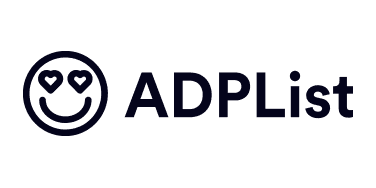
Overview
BobaTalks is a nonprofit organization that aims to help students and new professionals jumpstart their career through mentorship.
Design an internal scheduling tool so that students can find and connect with a mentor in their industry of choice.
ROLE
Product Lead
TIMELINE
May 2024 - September 2024
TOOLS
Figma, Notion, Google Drive, Slack
SKILLS
Product thinking
User research
Management
The Problem
BobaTalks' current mentorship platform lacks a centralized scheduling tool to facilitate mentor-student interactions.
Because of this, each mentor of BobaTalks uses different, external applications for scheduling meetings with mentees, scattering communication. This leads to other issues for both mentors and mentees, such as no-shows, unproductive meetings, and overall, burn out.
How might we help BobaTalks improve mentorship between students and their mentors?
USER RESEARCH
Competitive Analysis
We looked at the strengths and weaknesses of existing mentorship platforms and scheduling tools to brainstorm how we could design the best scheduling tool for BobaTalks. We were able to take inspiration from the user interface and user experience from these 3 competitors:

ADPList
ADPList has a smooth user experience for finding and booking sessions with mentors. We were also inspired by the detailed user interface of the mentor profiles and the step-by-step booking process.

Calendly
We studied Calendly's user interface and how it displayed today's date, available days in the month, and time slots. I liked how they played with shapes and colors shades to create hierarchy.

Cal.com
We noticed that Cal's user interface was quite similar to Calendly. They also both shared a very simple user flow. We applied this same user experience so that users experienced less frustration than trying to navigate a new way to schedule.
A DEEP DIVE INTO THE PROBLEM
Understanding our users
Target users: Students (mentees) and mentors
We decided to conduct user research to better understand the problem at a granular level and identify key user pain points and needs. We reached out to mentors and students in the BobaTalks community on Discord and LinkedIn, and sent a survey (51 students, 40 mentors) and completed 10 user interviews (4 students, 5 mentors). We synthesized the research and identified 3 key pain points users experienced with the current scheduling system:

Scattered Communication
It can be hard to track conversations when mentors and mentees are communicating via multiple external platforms (Linkedin, email, Discord, Calendly, etc).

No-shows
88% of mentors experienced no-shows from students, leaving mentors feeling burnt-out.
Unproductive meetings
Sometimes mentees engaged in out-of-scope topics like Visa information or referrals, leading to unproductive meetings for both mentors & mentees.
PRODUCT THINKING
Prioritizing key features
User research helped us understand the 3 main user pain points to solve for, and the competitive analysis of current scheduling tools helped us understand effective UI and features commonly used in these tools.
We brainstormed solutions to the 3 grievances, collaborating with engineers to gauge feasibility of implementation. We also got client feedback,and consider business goals. Overall, we prioritized based on level of priority (user needs and business goals) and feasability.


Ultimately, our original PRD focused on designing an internal scheduling system with features such as calendar integration, timezone alignment, and a confirmation page. Since we have two target users (mentors and mentees), we also had to design an option for mentors to provide availability when they signed up.
USER FLOW
Addressing all edge cases
We designed a user flow for both mentors and mentees to understand the ins and outs of designing a scheduling platform.

MENTEE USER FLOW

MENTOR USER FLOW
PRODUCT THINKING
Updating the PRD
After designing the user flow, we discovered specific edge cases that led us to add new features into the original PRD, such as a mentor search page and a dashboard to manage, reschedule, and/or cancel meetings.
Thus, we went from designing an internal scheduling tool to an end-to-end mentorship platform.
Added features:
A search page for students to search up mentors in by name, industry, company, or more.
A dashboard for mentors and mentees to track, reschedule, or cancel meetings.



HOW IT WORKS
Dashboard
Students are able to track, reschedule, and cancel any meetings easily. In addition to the Google calendar integration, this feature helps to mitigate no-shows.

Student Flow
Students are able to read about the experience of a mentor and schedule a specific date and time to meet with them. They are also asked to specify the topic of discussion and read the Code of Conduct to enhance productivity in meetings for both mentors and mentees. This internal scheduling tool centralizes scheduling in one place, minimizing scattered communication.

Mentor Flow
When mentors sign up for BobaTalks for the first time, they are prompted to add information like their education, industry experience, and availability. This allows students to find the mentor that is the best fit for them based on expertise and availability to meet.

Learnings
Communicate constantly
There were definitely a lot of times when communication could have been used to avoid issues. For example, one of our team members left after expressing other summer commitments, which meant that I had to assume her responsibilities. Additionally, another team member expressed a desire to take on more work a lot later in the project batch. As a product lead, it's important to check in and communicate with your team before issues arise.
Take initiative to learn
Through this experience, I learned that taking initiative is one of the most important parts of learning the design process. Since we didn't have a ticketing system, many responsibilities were assumed by those eager enough to undertake the task. As a product lead, I saw that those who took initiative created the most impact and likely learned the most.